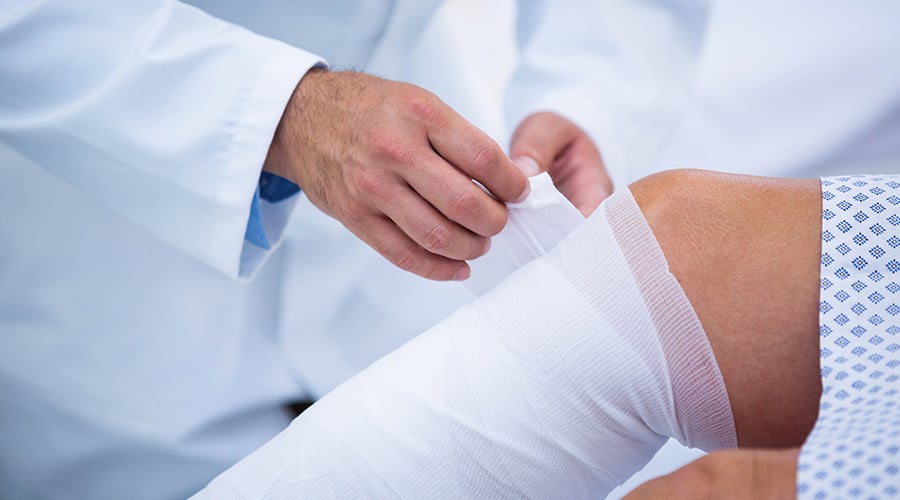For decades, avascular necrosis (AVN) of the femoral head was regarded as a degenerative...
Muscle Flap Surgery & HBOT

Much like skin flap surgery, muscle flaps are similarly utilized to reconstruct those wounds that may have resulted from trauma, chronic disease, tumor extirpation, burns, and infection.
In certain instances, reconstructive failure can result, typically from poor wound beds, radiation damage, random flap necrosis, vascular insufficiency, or ischemia-reperfusion. In these cases, hyperbaric oxygen therapy (HBOT) has demonstrated utility in the salvage of these compromised muscle flaps, increasing the likelihood of survival and preventing the need for additional surgery down the line.
The Surgery, Explained
Muscle flaps are often used in the complex reconstruction of defects requiring the filling of dead space or coverage of exposed vital structures—bone, tendon, nerve, vein graft or vessels—as well as in the treatment of osteomyelitis, an infection of the bone. Many times, they come into play in situations where skin grafting or local flaps would not adequately address the defect, or where these have previously failed.
Depending upon the surgeon’s preference and comfort, muscle flap surgery may in fact be the first and best option. Factors to consider include pedicle needs, wound dimensions, donor site morbidity, the defect location, and any subsequent need for future surgical treatment. Muscle has a tremendous infection-fighting ability compared to skin flaps, making it an excellent choice for complex wounds, which may be contaminated by regular dressing changes.
Muscle flaps, much like skin grafts and flaps, can be utilized as both local (attached to the donor site and stretched to cover the recipient site) and free (completely removed before being transported to its new location), and serve as a valuable and versatile tool in surgical treatment of compromised lower extremities. In addition to other benefits, they can be used to treat recalcitrant venous stasis ulcers, preserve amputation levels, and restore motion following compartment syndrome.
HBOT & Muscle Flap Salvage
When a flap becomes compromised, previous strategies have included local wound care, surgical debridement, and repeated reconstruction. With HBOT, increased oxygenation, improved fibroblast function, and neovascularization can contribute to the preservation of the amputated tissue, minimizing the morbidity and maximizing the reconstructive outcome.
Numerous animal studies have shown the effectiveness of HBOT in experimental clinical situations, and medical research supports these findings. The key to success is identification of the underlying cause of the flap failure, to determine the best means of salvage. By maximizing the viability of the compromised tissue, hyperbaric oxygen therapy greatly reduces the need for repeat flat procedures.
For more information on the benefits of HBOT, please contact Hyperbaric Medical Solutions today.

Written by Alan Katz, MD, FUHM, FACEP, FAAEM
Dr. Alan Katz, National Medical Director of Hyperbaric Medical Solutions (HMS), is double board certified in Emergency Medicine and Hyperbaric Medicine. He directs clinical operations, education and research initiatives, and the integration of other regenerative medicine therapies....
Read More


